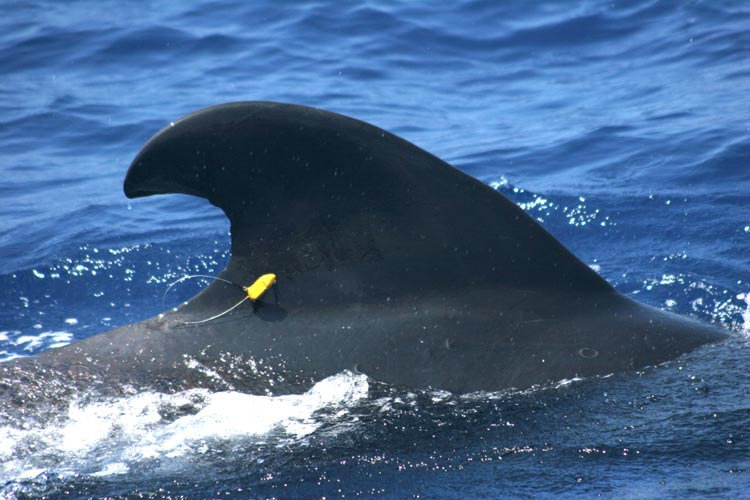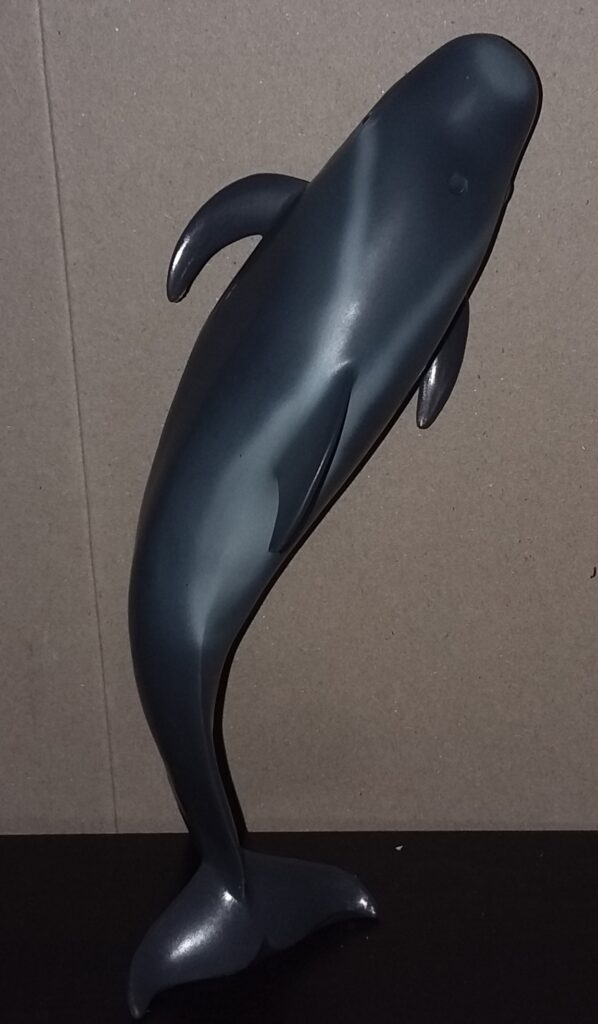Review and images by callmejoe3; edited by bmathison1972
When it comes to cetaceans, I generally find all mysticetes equally interesting, but I have strong preferences between different odontocetes. Outside of sperm whales and orcas, my next favorites are the members of the Globicephalinae subfamily of oceanic dolphins. This taxon contains all the species of dolphins referred to as ‘’blackfish’’, other than the killer whale. The Globicephala genus contains the next most popular species of blackfish, the pilot whales. Pilot whales are named such due to the many observations of mass standings leading to theories that leaders within their groups are followed, even if it spells certain death. Indeed, pilot whales are known to have strong social bonds. The two species within this genus are the short-finned pilot whale (Globicephala macrorhynchus) and the long finned pilot whale (Globicephala melas). Ecotypes have been proposed for short-finned pilots while two extant subspecies are recognized for long-finned pilot whales, with a third subspecies in the North Pacific that had gone extinct by the 12th century. These species vary in distribution, where short-finned pilots prefer warm temperate and subtropical waters while long-finned pilots prefer cold temperate and subpolar waters. In areas where they overlap, they are near impossible to tell apart without scrutiny by experienced professionals. While visual discrimination between the two species proves difficult, pilot whales are easy to distinguish from other blackfish due to their large size and bulbous heads. Hybridization between the two species has been observed. Both species primarily feed on squid and small to medium sized fish. Pilot whales are known to fraternize with other cetaceans, though short-finned pilots are known to interact more with and occasionally harass larger species of whales. Both species are similar in size, ranging 4-7 meters in length and 1-3.6 tons in mass with the males generally being larger than the females. The IUCN status for both species are ‘’Least Concern’’ as of 2018, though population estimates are data deficient. Regional counts suggest global populations in the hundreds of thousands for both species. Short-finned pilot whales are continually hunted in places such as the Caribbean, Sri Lanka, the Philippines, and Japan while long-finned pilots are still caught in Greenland and the Faroe Islands. Their strong social bonds leave large groups vulnerable to drive fisheries with annual hauls in the hundreds.

CollectA released their pilot whale figure in 2013 prior to Safari Ltd.’s 2014 counterpart. This figure measures in at approximate 190 mm. At the 1:40 scale, this represents a very large 7.6m/25ft individual. It pushes the limits, but is ultimately consistent with the largest recorded males.

In terms of getting the details of coloration down, this figure is in a similar league as CollectA’s 2018 minke whale. The head is large and bulbous, which is very appropriate for mature bulls. The body is colored a dark gray with off-white ‘’eyebrow’’ blazes and a saddle that forms posterior to the dorsal fin. The dorsal fin itself is fairly accurate to the pilot whale, it’s positioned correctly and is relatively low. The arch is consistent with a male’s. However, the base should look broader, so the back of the fin looks more concave as in the example below.


If you look closely behind the eyes, there are a tiny, sculpted ears just as with the minke whale figure. However, unlike the minke whale, the coloration is not enough to determine which species this belongs to. This requires greater attention to the sculpt of the flippers. The flippers are approximately 18-19% of the body length, within range for both species, however, the shape is more in line with short-finned pilot whale’s gentle curves rather than the sharper curves of the long-finned pilots.


From the dorsal view, you can more greatly admire the saddle-patch and the blowhole, which is a bit to posterior relative to the plane of the eyes. On the ventral view, we find this figure has a chest patch and a subtle line that runs down toward the urogenital slit. The lack of mammary slits confirms this is a male individual.
Overall, this is a genuinely nice figure, however there are two minor negatives for me. I feel the size is a bit too large. While it does not ruin the scale of my 1:40 collection, it does look distracting next to my notably smaller orcas. A more glaring issue is the lateral arch for the pose. I generally prefer cetaceans to be relatively straight with their tales arched slightly downward. In both respects, the Safari ltd pilot whale suits my tastes better, but the CollectA pilot whale is by far the more realistic between the two. It is a great figure to add to the collection, especially if you are not particularly conscious about scale or pose.
Disclaimer: links to Ebay and Amazon on the AnimalToyBlog are affiliate links, so we make a small commission if you use them. Thanks for supporting us!




Thanks again! I have the Safari version (the online seller I use didn’t have the CollectA one at the time.
I prefer the way the eyes are painted on this CollectA version (or I should say, I am less crazy about the eyes on the Safari one), but the Safari figure serves my needs nicely, so I won’t replace it. At least not anytime soon.
Yeah, they Safari overdid it with the sclera. Generally, it’s always safer for companies to just make the entire eyes black when it comes to cetaceans.